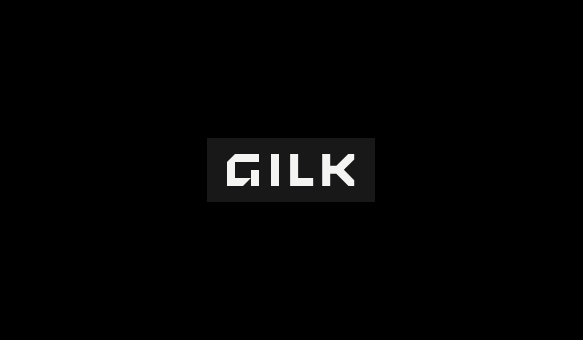Rebuilding or repairing your home of business after the storm? Adding on, renovating or remodeling your home or business?
Check Out: Disaster Relief PDF
Here’s the information you need to know about the FEMA 50% Rule.
The Federal Emergency Management Agency (FEMA) manages theNational Flood Insurance Program (NFIP), which works with local insurers to provide covered communities with flood insurance. As such, FEMA is responsible for setting many of the rules and regulations for flood insurance programs nationwide.
One of the most important rules the agency has set is known as the “50% Rule.” This rule can significantly impact people whose properties have been damaged by standing water. If you live in Florida, understanding the50% rule is critical to ensuring you’re ready to file a successful property damage claim after hurricanes and floods.
What Is the FEMA 50% Rule?
Under FEMA’s guidance, the NFIP has instituted a rule that“prohibits improvements to a structure exceeding 50% of its market value unless the entire structure is brought into full compliance with current flood regulations.” This is otherwise known as the 50% Rule. It prevents property owners from improving or repairing their properties significantly, on their owner with the use of insurance funds, unless the property meets NFIP standards.
This regulation plays a crucial role in flood insurance eligibility. Properties that are substantially improved or damaged and fail to comply may find themselves ineligible for flood insurance, or facing a potential increase in premiums by as much as 300%. Conversely, if the property conforms to the latest standards, premiums could stabilize or decrease.
The rationale behind the 50% Rule is grounded in economic practicality for FEMA, the NFIP, and associated local insurance entities. It is particularly pertinent in flood-prone areas such as coastlines and river flood plains where properties are frequently not up to code and are susceptible to routine flood damage. This rule encourages property owners and insurers to undertake necessary upgrades to reduce future flood damage, potentially lowering long-term costs for both parties.
However, this rule also complicates the repair process post-flood. Property owners must ascertain whether the cost of necessary repairs will exceed 50% of the property's pre-damage market value. If so, substantial upgrades may be required to align with current flood regulations, posing a challenge for those looking to quickly and affordably restore their properties.
What Is Considered Substantial Damage?
The most frequent reason the 50% Rule is triggered is substantial damage to a structure. “Substantial damage” is defined as “damage of any origin sustained by a structure whereby the cost of restoring the structure to its before-damaged condition would equal or exceed 50 percent of the market value of the structure before the damage occurred.” It also includes“flood-related damage sustained by a structure on two separate occasions during a 10-year period for which the costs of repairs at the time of each such flood event, on average, equals or exceeds 25 percent of the market value of the structure before the damage occurred.”
If a property is damaged by a flood, fire, or any other natural disaster, it can easily cost more than half of its market value to repair it. Regardless of what caused the damage, owners are still required to abide by the 50% Rule or risk losing affordable flood insurance coverage entirely.
What You Need to Do to Comply With the 50% Rule
The 50% Rule requires properties to meet specific standards that vary depending on the risk to the structure. The NFIP determines the risk of flooding for neighborhoods and municipalities and categorizes them based on the danger they face. Each of these categories is held to specific minimum requirements to protect the property from future damage.
To comply with the 50% Rule, you must either remain below the repair or improvement cost threshold or update the property to meetNFIP minimum requirements. This may range from using dry-flood proofing techniques to seal commercial buildings against water to rebuilding residential structures, so the lowest living level is above the Base Flood Elevation.
Items To Be Included In Substantial Improvement /Substantial Damage Review
ITEMS TO BE INCLUDED IN ESTIMATING COST:
All structural elements including but not limited to:
- Spread or continuous foundation footings and pilings,
- Monolithic or other types of concrete slabs,
- Bearing wall, tie beams and trusses,
- Wood or reinforced concrete decking or roofing,
- Floors and ceilings,
- Attached decks and porches,
- Interior partition walls,
- Exterior wall finishes (e.g. brick, stucco, or siding) including painting and decorative moldings,
- Windows and doors,
- Re-shingling or retiling of roof, and
- Hardware.
All interior finish elements, including but not limited to:
- Tiling, linoleum, stone, or carpet over sub-flooring,
- Bathroom tiling and fixtures,
- Wall finishes, e.g. drywall, painting, stucco, plaster, paneling, marble, or other decorative finishes,
- Kitchen, utility and bathroom cabinets,
- Built-in bookcases, cabinets, and furniture, and
- Hardware.
All utility and service equipment, including but not limited to:
- HVAC equipment and duct work,
- Repair or reconstruction of plumbing and electrical services,
- Light fixtures and ceiling fans,
- Security systems,
- Built-in kitchen appliances,
- Central vacuum systems, and
- Water filtration, conditioning or recirculation systems.
Also:
- Labor and other costs associated with demolishing, removing or altering building components, and
- Overhead and profit.
ITEMS TO BE EXCLUDED IN ESTIMATING COST:
- Plans and specifications,
- Survey costs, and
- Permit fees.
- Debris removal (e.g., removal of debris from building or lot, dumpster rental, transport fees to landfill and land fill tipping fees), and
- Clean-up (e.g., dirt and mud removal, building dry out, etc.)
- Items not considered real property such as: throw rugs (carpeting over finished floors), furniture, refrigerators, stoves not built-in, etc.
- Outside improvements, including:
- Landscaping,
- Sidewalks,
- Fences,
- Yard lights,
- Swimming pools,
- Screened pool enclosures,
- Sheds,
- Gazebos,
- Detached structures (including garages), and
- Landscape irrigation systems.
The Impact of the 50% Rule on Property Insurance Claims
If your home or commercial property has faced significant damage, determining the exact cost of repairs compared to its market value becomes critical. You can proceed with your repairs as usual if it does not meet the 50% threshold. However, if costs exceed half the property’s value, you must determine what is necessary to bring it up to the flood code.
FEMA and the NFIP do not set specific rules for determining cost and market value estimates. Instead, they leave this up to local officials. In Florida, for example, property owners must use either theirCounty Property Appraiser’s valuation or that of a state-licensed private appraiser as the market value. Meanwhile, the costs to repair damage may include itemized bills or professional estimates from licensed contractors.
If you're facing the daunting task of evaluating repair costs for your home and need expert guidance to navigate through the complexities, we invite you to schedule a consultation with Gilk. Our team is here to assist you in making informed decisions that align with FEMA's guidelines and help ensure your home meets all required standards. Don't navigate this challenging time alone—let Gilk help you take the first step towards restoring your home.



